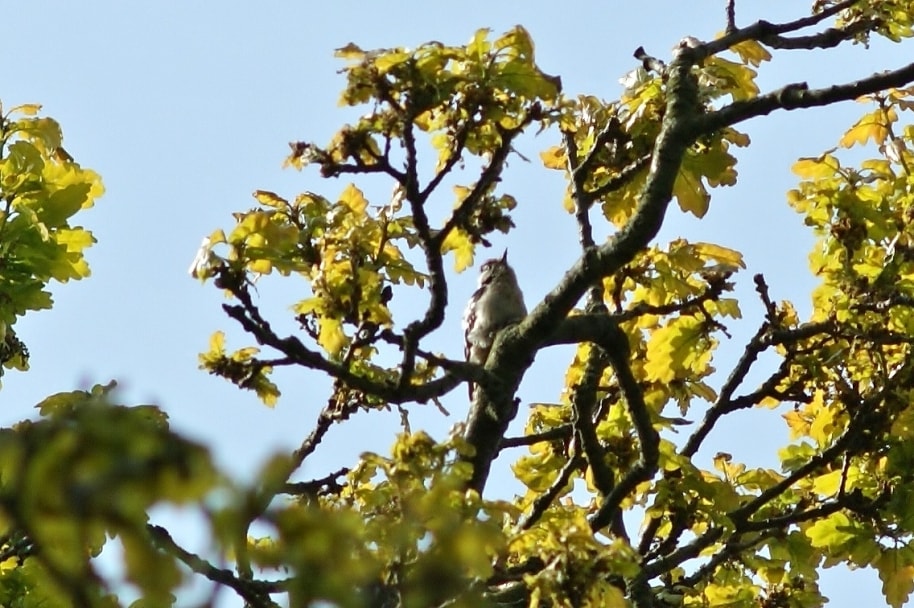What an amazing day at the 2018 #WildaboutGardens Celebration Event, showcasing the incredible efforts of gardeners across Kent who are doing so much to support wildlife. A big thank you to all the wonderful volunteers & sponsors, including @optivohomes who sponsored the event.Kent Wildlife Gardens Wild about Gardens Awards is designed to encourage people to welcome wildlife into their gardens, whatever the size, type or primary use of the garden.
Tuesday 30 October 2018
Saturday 20 October 2018
Citizen science helps lift the lid on finch leg disease
Observations collected by citizen scientists have helped vets investigate the occurrence of a leg condition that affects British finches.
A new study, published in Scientific Reports, shows that reports of leg lesions peak in winter, which may be linked to the annual influx of migratory Chaffinches from mainland Europe.
Leg lesions, commonly known as 'scaly leg' or 'tassel foot', are growths on the legs and feet seen in finches across Europe. Leg lesions in Chaffinches are one of the most frequently observed signs of ill health in British garden birds, and have been known to occur for decades. Up until now there has been no large-scale study of this condition, and it has been unclear if it is more common at particular times of the year or in particular regions of Britain. Weekly records of the presence of leg lesions in garden birds, received from volunteers taking part in the British Trust for Ornithology's (BTO) Garden BirdWatch survey, alongside reports from members of the public received via the Garden Wildlife Health website, have allowed us to answer these questions for the first time.
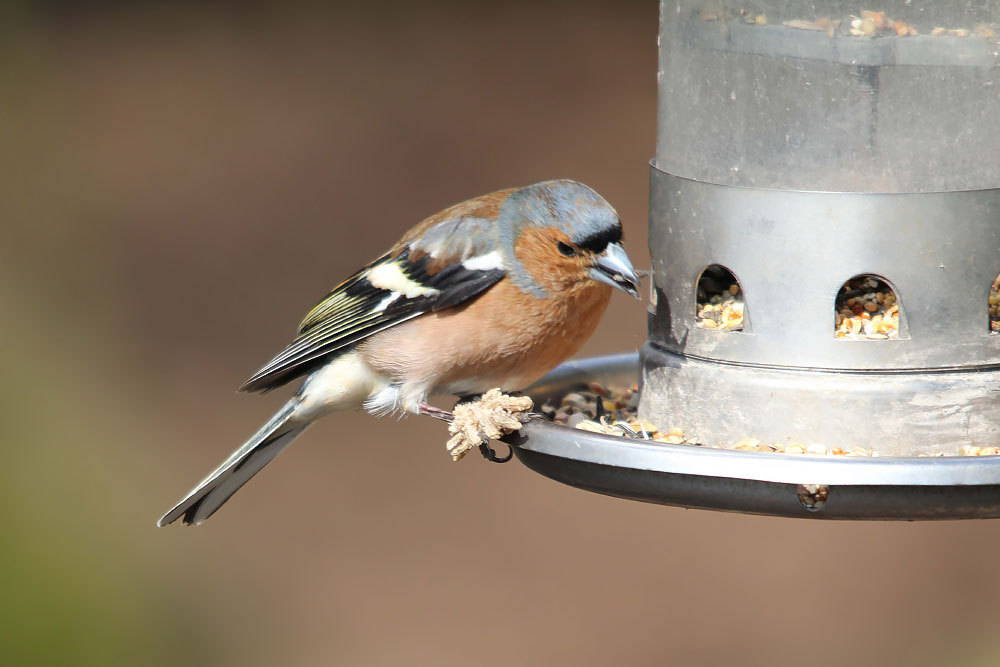
A male Chaffinch with scaly leg (Luke Delve).
Each week an average of 3-4 per cent of BTO Garden BirdWatchers recording Chaffinches see a bird with leg lesions in their garden, with the location of these being widespread across Britain. However, there is clear seasonality in reporting, with a peak from November-March. While Chaffinches occur in Britain throughout the year, higher numbers are reported during the winter months, as a result of an influx of migratory birds from mainland Europe, and it is thought this is related to the winter peak in leg lesions.
Chaffinches are by far the most likely species to be seen with leg lesions in gardens, but the condition has been reported less commonly in a number of other finch species including Brambling, Eurasian Bullfinch, Goldfinch and Greenfinch. Results from post-mortem examinations of just over 1,000 finches in Britain have identified two causes of this type of leg lesion; a virus (Fringilla coelebs papillomavirus) and mites (Cnemidocoptes).
Becki Lawson from Zoological Society of London's Institute of Zoology, said: "Leg lesions in finches are highly visible and can generate public concern for animal welfare. While birds with severe lesions can become lame or increasingly vulnerable to predation, most affected birds continue to behave normally. The majority of reports involve individual affected birds rather than outbreaks involving large numbers of birds. Our study did not find leg lesions as a common cause of death and there is no evidence that this condition poses a threat to conservation."
BTO's Kate Risely added: "Thousands of people report their garden wildlife sightings to Garden BirdWatch every week. While it can be upsetting to see birds with health problems, these results show that regular reporting of symptoms can help us learn about large-scale patterns when used in conjunction with one-off reports. We are very grateful to everyone who reports their sightings to BTO and to Garden Wildlife Health."
Both the mite and viral infection that cause leg lesions are thought to be transmitted by contact. Good hygiene measures such as cleaning bird feeders are recommended as a routine to minimise transmission of disease at feeding stations. You can learn more about maintaining good hygiene, and help our research at the Garden Wildlife Health website. If you enjoy watching your garden birds you can also help by taking part in the weekly BTO's Garden BirdWatch survey.
Kate Humble announced as new WWT president
TV presenter Kate Humble has been announced as the new president of the Wildfowl and Wetlands Trust (WWT). At the charity's annual general meeting she promised to be the WWT's most active and most vocal supporter, and said: "I'm very excited about my next three years as WWT President – it feels as though WWT is on the cusp of something new and amazing. The time has come for the WWT way to become the mainstream."
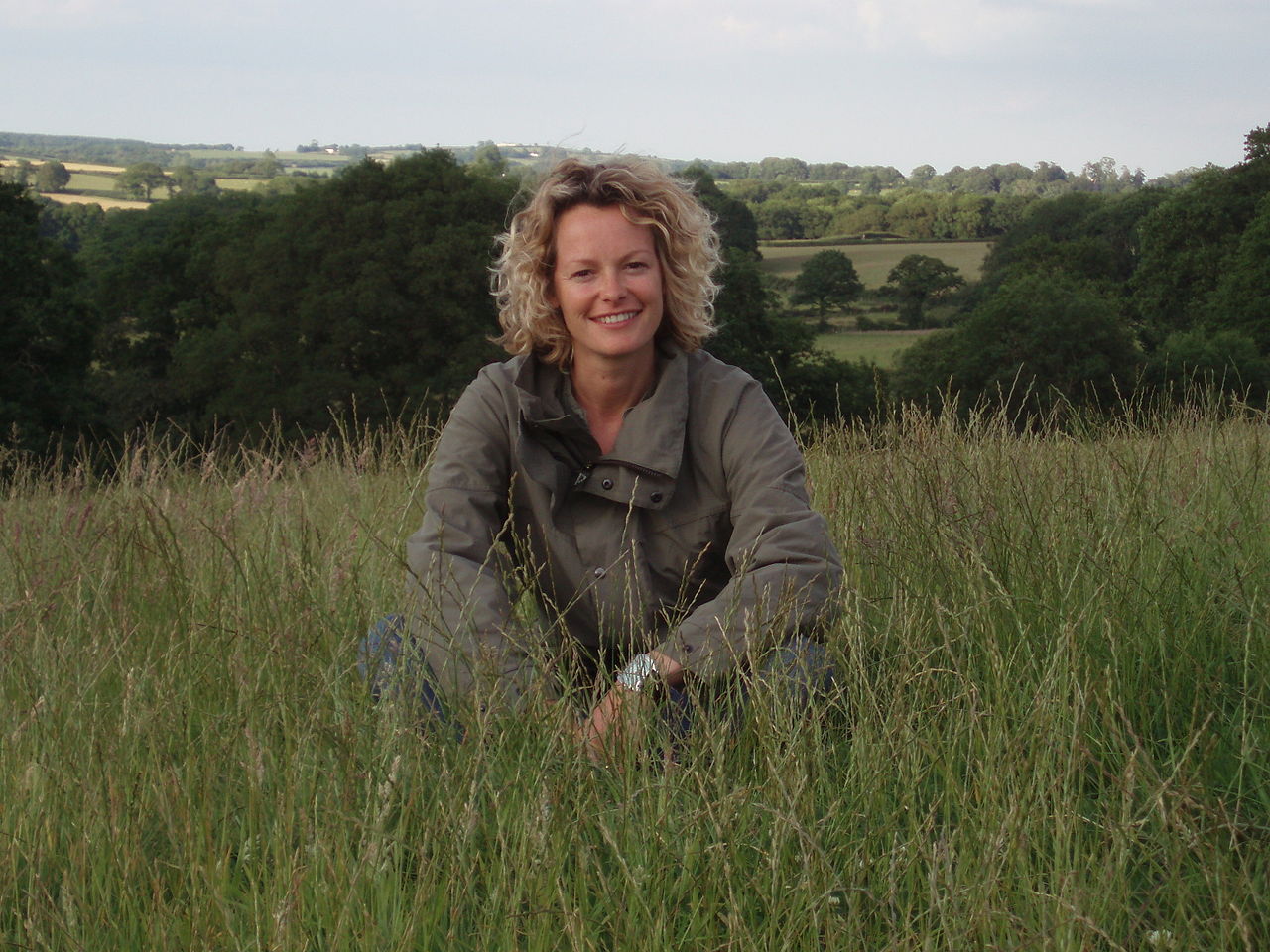
Humble will serve as president of WWT for three years (commons.wikimedia.org).
Humble's association with WWT dates back to the early days of Springwatch, and she will serve as president for three years, having previously been vice-president. In 2016, Her Majesty the Queen stepped down from various public commitments including her patronage of WWT. Consequently, Prince Charles stepped up from his role as president to patron, resulting in the need to find a new presidential candidate.
Humble was delighted to take on the opportunity, and said: "WWT's proactive, hands-on approach to conservation appealed to me right from the start, and I’ve learned that the charity brings a 'can do' attitude to all aspects of its work. I feel very at home with the way WWT engages with the public. They're determined that wildlife is for everybody to enjoy, and that’s my approach too: in order to work, conservation has to include people."
At the start of her term, Humble will set out what she hopes to help WWT achieve, and rally the support of the vice-presidents. She added: "WWT can achieve so many different things in different places – it might help prevent flooding in a village in Somerset or create somewhere wild for inner-city pupils to play.
"With its history of backing brave plans, engaging people from all walks of life and making everyone feel included, it has convinced me. My job is simply to make as many people aware of the work of WWT and the huge amount it has to offer all of us – what a lovely job to have!"
Breeding success for Lesser Spotted Woodpecker
Despite a later than normal breeding season, the Woodpecker Network has reported successful nesting from their monitored Lesser Spotted Woodpeckers in 2018. Having received reports of territorial birds or pairs at 85 sites this year, the Network was able to monitor 10 nests, all of which enjoyed success. The average number of young fledged per nest was 2.9 – a reasonable figure and, while it's still lower than similar studies in Europe, it's not as disastrous a number as previously thought.
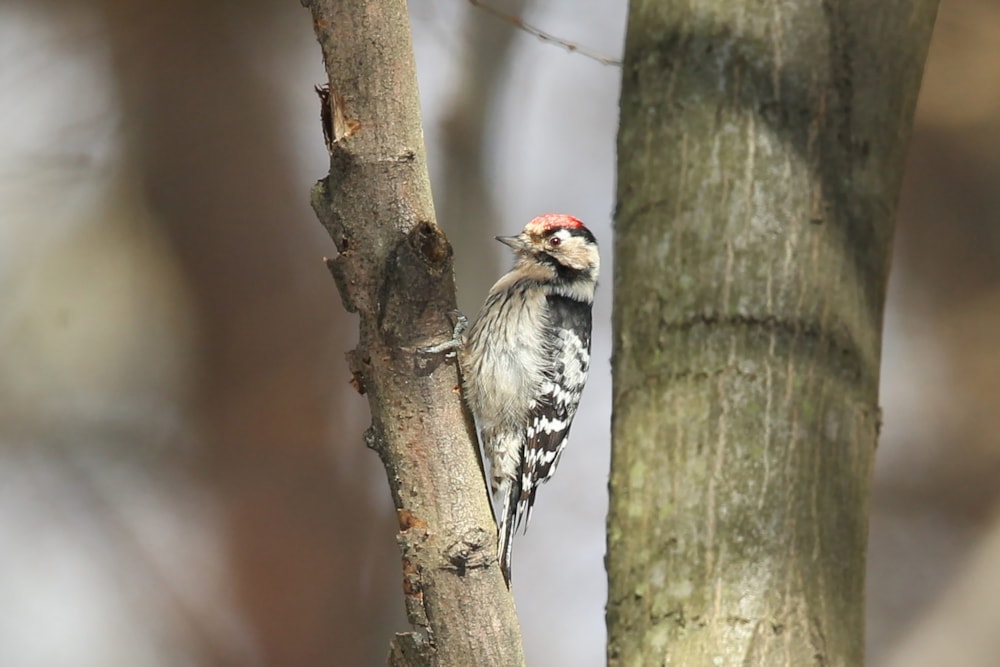
The small sample from the study offers a tentative suggestion that Lesser Spotted Woodpeckers have enjoyed a reasonable couple of years of breeding (Colin Bradshaw).
The stand-out feature of the 2018 season was its lateness, with the 'Beast From the East' in early spring seemingly delaying the start of nesting for most pairs. Most young did not fledge until mid-June, which is about 10-14 days later than usual, though early indications from British Trust for Ornithology (BTO) nest recorders suggest late nesting has been the norm for many species this year.
However, one Lesser Spotted Woodpecker pair was an exception to this, as they successfully fledged four young on 31 May in Norfolk, in sync with the timing of nests found in the area in previous years. It seems this was a well-established pair, and studies in Sweden have demonstrated that experienced birds tend to nest early and fledge more young than first-time breeders. Furthermore, the surveyors provided supplementary food through the winter and into spring, which may have been a factor in allowing the birds to lay early and sustain incubation through the cold snap.
The Woodpecker Network used nest inspection cameras to record clutch size and number of chicks fledged; information that is vital to understand the reasons for the decline of the species. However, finding Lesser Spotted Woodpecker nests is exceptionally hard, as demonstrated by the fact that the exact nest location was found at fewer than 12 per cent of reported territories. In East Sussex, a family party was found by accident, at a new site, during a botanical and entomological survey on 3 June.
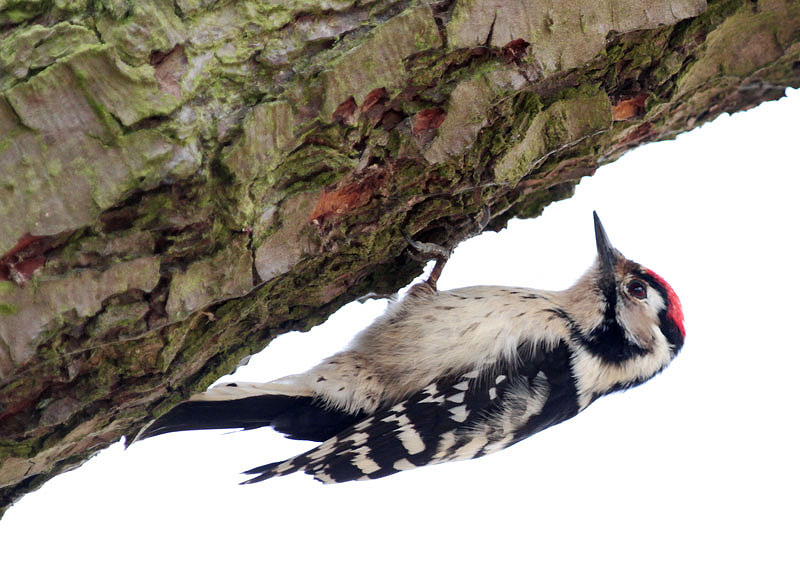
All of the 10 nests were in dead substrate of a tree, of which seven were entirely dead (Darren Chapman).
Other nests were simply unable to be found despite the clear presence of pairs. In Surrey, an established pair were observed in late winter and early spring, but seemingly went AWOL before an adult was seen carrying food and a fledgling was recorded on 12 June. In the New Forest, an adult making repeated flights across a clearing with food in its beak on 13 June was seen but, despite careful searching at the time, the nest wasn't found. Even after a tree-by-tree search through the area on 15 June there was no sign of the birds or a used nest.
However, there was also negative news. Despite a male drumming at three sites within 1 km of each other in Lincolnshire, for a third consecutive year, there was no evidence of a nest or female. Sadly, this is probably symptomatic of what can happen when a species falls to such low numbers. In Devon, an excavating Lesser Spotted was displaced by a Great Spotted Woodpecker. This displacement is rarely recorded, but is thought to be quite a common occurrence. In terms of the latter species predating young, this is likely only an issue when they are struggling to find food. Indeed, in Devon this year, there was an active Great Spotted nest within 20 m of a Lesser Spotted nest, with both fledging young successfully.
Furthermore, the study found no instances this year of nest failures as a result of interactions with Great Spotted Woodpeckers, and with the initiative in its fourth year with data from 43 monitored nests collected, a feasible sample for analysis is being created. None of the breeding seasons since 2015 can be deemed outstanding, but three of four have been reasonable (2016 saw a low of 1.2 young fledged per nest). The study relies on the hard work of nest finders and monitors, and it's hoped that more can be discovered and observed in 2019. You can visit the Woodpecker Network website here, and view the 2018 report here.
More conservation action needed for Britain's declining waders
Breeding waders, such as Eurasian Curlew, Northern Lapwing and Eurasian Oystercatcher, deliver some of the most iconic sights and sounds of the British countryside, but are in long-term decline. However, a newly published study from the British Trust for Ornithology (BTO) provides hope by showing that many of the conservation interventions widely adopted for these species do indeed work.
Britain's emblematic grassland-breeding waders face a set of common threats throughout much of Europe. The loss or deterioration of breeding habitat through changing agricultural practices, together with increasing predation pressure, are driving population declines, reducing the number of chicks produced to below the threshold needed to maintain stable populations. Despite being subject to decades of conservation effort, many of these species are still declining, suggesting that our efforts have been in vain. If the declines are to be halted and ultimately reversed, humans need to identify and test the effectiveness of those conservation and policy initiatives designed to help these species.
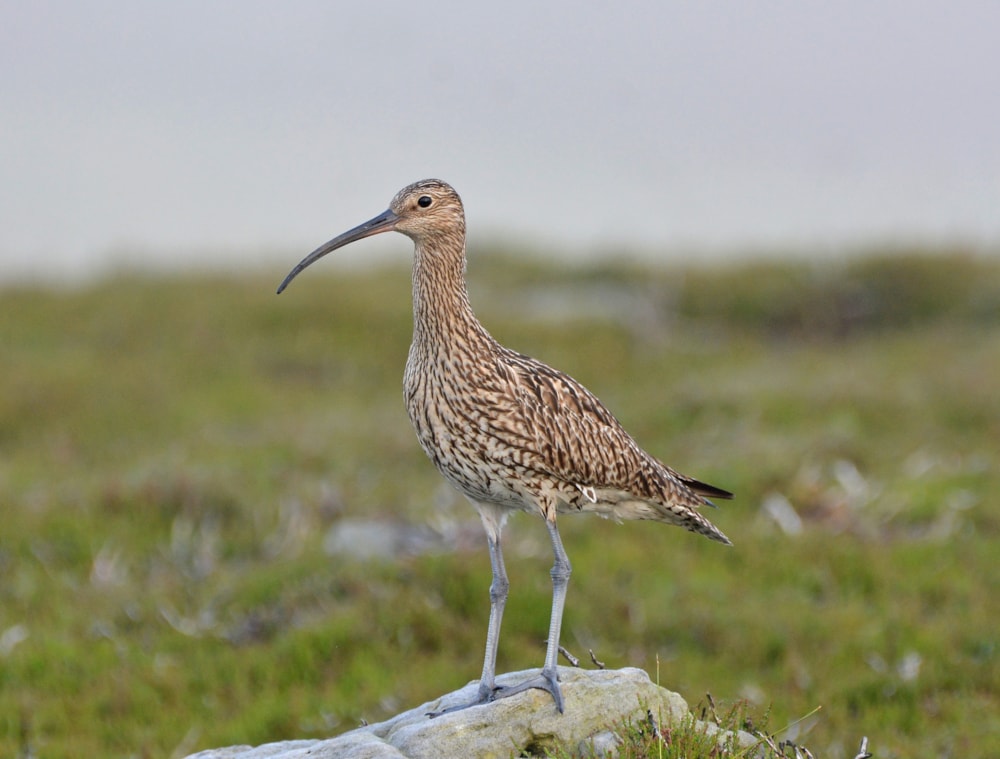
As declines continue, fears grow for the future of Britain's breeding Eurasian Curlew population (Damian Money).
However, a review of the effectiveness of these conservation actions, led by Dr Samantha Franks of the BTO in collaboration with the Dutch organisation Sovon, reveals that many of the policy and conservation management actions already in place in many European countries, and across the UK, are broadly effective, though to varying degrees. Some of the most effective actions are targeted site protection measures and higher-tier agri-environment schemes. Higher-tier schemes, which combine a suite of targeted conservation actions aimed specifically at benefiting waders, are particularly effective at improving wader numbers over time and increasing breeding productivity.
Underpinning these policies are specific types of management that were also reviewed, with good evidence that altering mowing levels, reducing agrochemical use, raising water levels and protecting eggs and chicks from predation usually tend to work as they increase wader breeding productivity. However, despite this positive news, wader populations are still declining. This suggests that even though conservation actions often have a positive outcome, this may not be occurring frequently enough, or at a large enough scale, to compensate for declines occurring outside managed areas; furthermore, the magnitude of positive effects of these actions may be too small. In other words, we know what action is needed – we just need more of it.
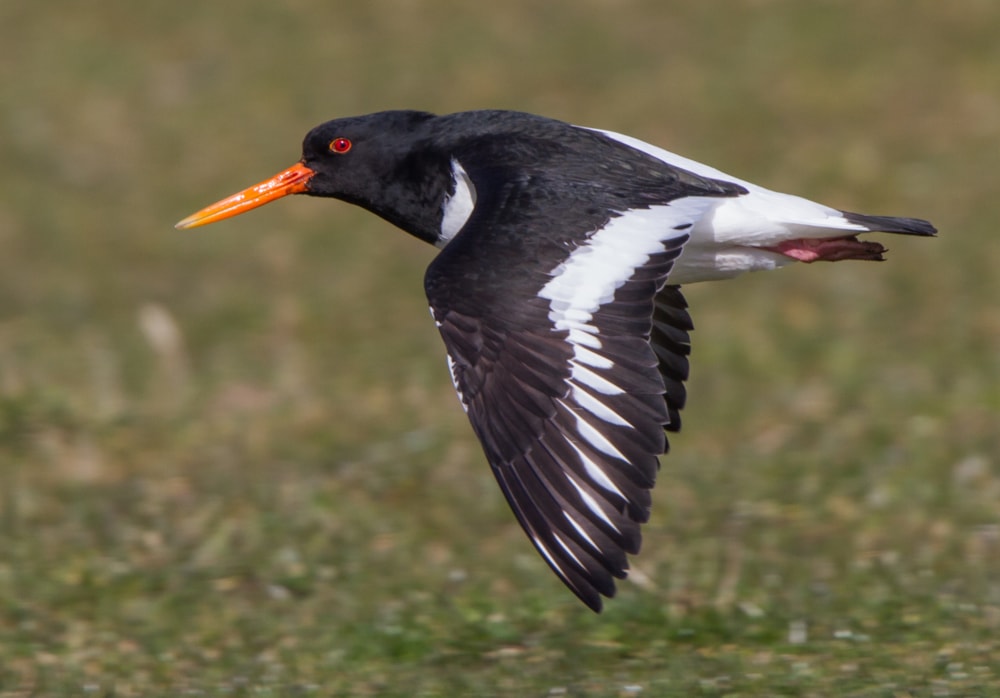
Eurasian Oystercatcher remains fairly common and widespread, but declines have been noted (Peter Garrity).
Dr Franks commented: "Policy tools such as Special Protection Areas (SPAs) and Agri-environment Schemes (AESs) are clearly achieving positive effects, which is a key message at a time of uncertainty for national and European institutions and agricultural policy reform.
"Restoration of healthy wader populations in the wider countryside will depend on the implementation of effective measures at a much greater scale and with greater co-ordination, thereby increasing the amount of land managed favourably for these and other grassland species. The opportunities to achieve this will, to a large degree, depend on the level of support and funding made available by European governments, perhaps delivered within the UK through policies that seek to use public money to provide public goods, such as a healthy environment rich in breeding waders. This in turn, will depend upon how much our society is prepared to protect and restore farmland biodiversity."
Prolific egg collector pleads guilty
Daniel Lingham, who stole almost wild bird 5,000 eggs, today [12 October 2018] pleaded guilty to five charges at Norwich Magistrates' Court.
Lingham is now due for sentencing on 27 November at the same court, having taken eggs from rare and threatened species including Western Marsh Harrierand European Turtle Dove. Describes as the most prolific egg collector in recent years, one of the charges Lingham pleaded guilty to was the possession of 75 eggs belonging to Schedule One species.
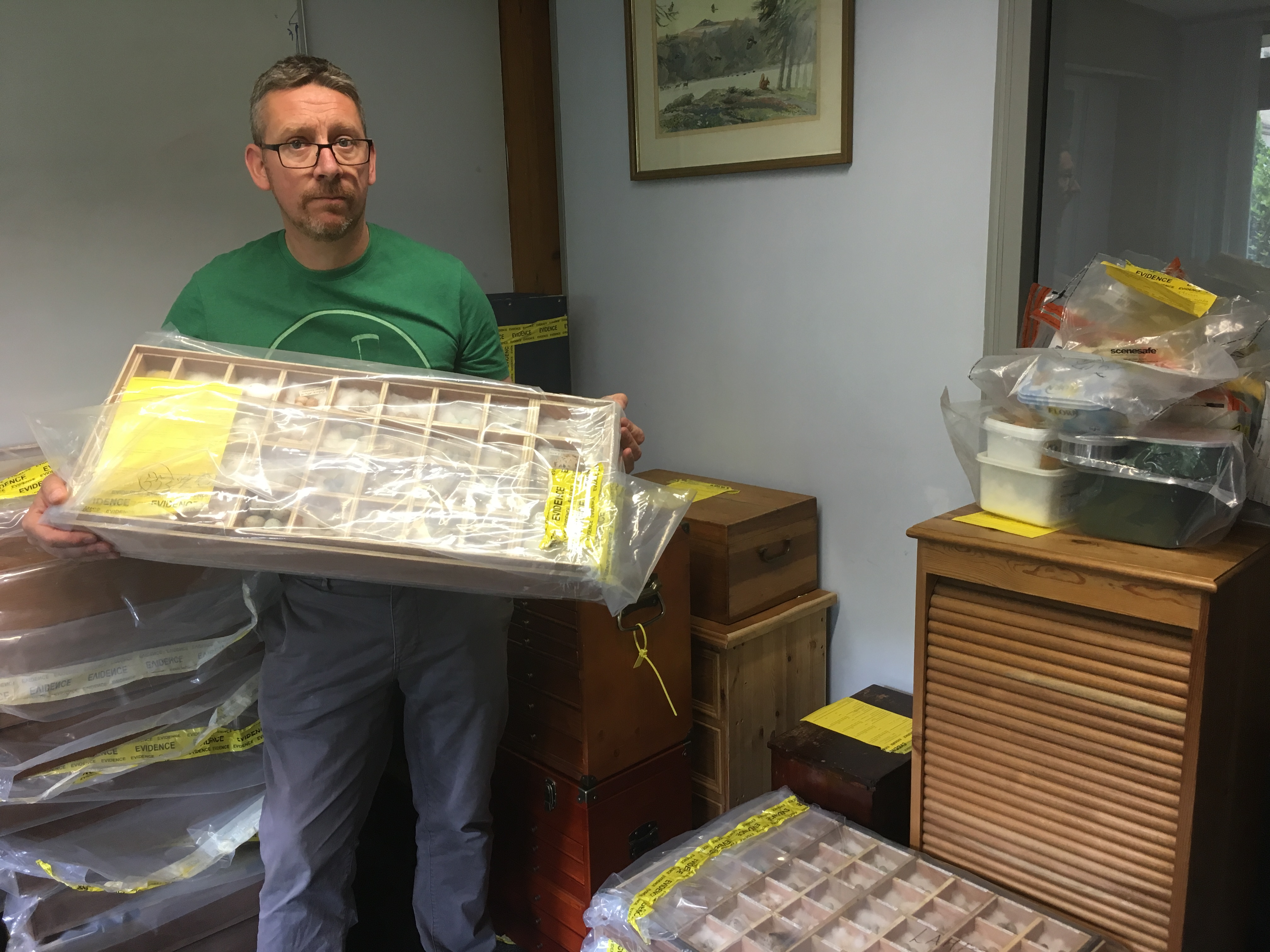
RSPB Senior Investigator Mark Thomas stands with part of Lingham's collection that was seized by police (RSPB).
The court heard how, on 21 May this year, Norfolk Constabulary were called to Cawston Heath following reports of a man acting suspiciously. The man – Lingham – was located and arrested after being found with nine Common Linnet eggs. The police contacted the RSPB and, following their advice, a search was conducted at Lingham's home in Newton St Faith. Here nearly 5,000 eggs were found, stored and catalogued in wooden trays, having all been taken from sites in Norfolk.
Lingham has a track record of breaching the Wildlife and Countryside Act 1981, having been jailed in 2005 for 10 weeks following the discovery of 4,000 eggs at his home by police. Mark Thomas, RSPB Senior Investigator, said: "At a time when egg collecting is on the decline, Lingham is the most prolific egg collector in recent years. It's very rare that an egg collection of this magnitude comes to light these days.
"Lingham has taken significant numbers of eggs from some of our rarest and most threatened birds. This will have a huge impact on their local, regional and national populations. Birds like European Turtle Dove are in long term decline – we have lost 94 per cent of them in the Britain since 1995 and no British bird is declining faster. These are species that conservationists are working tirelessly to save, for the benefit of future generations."
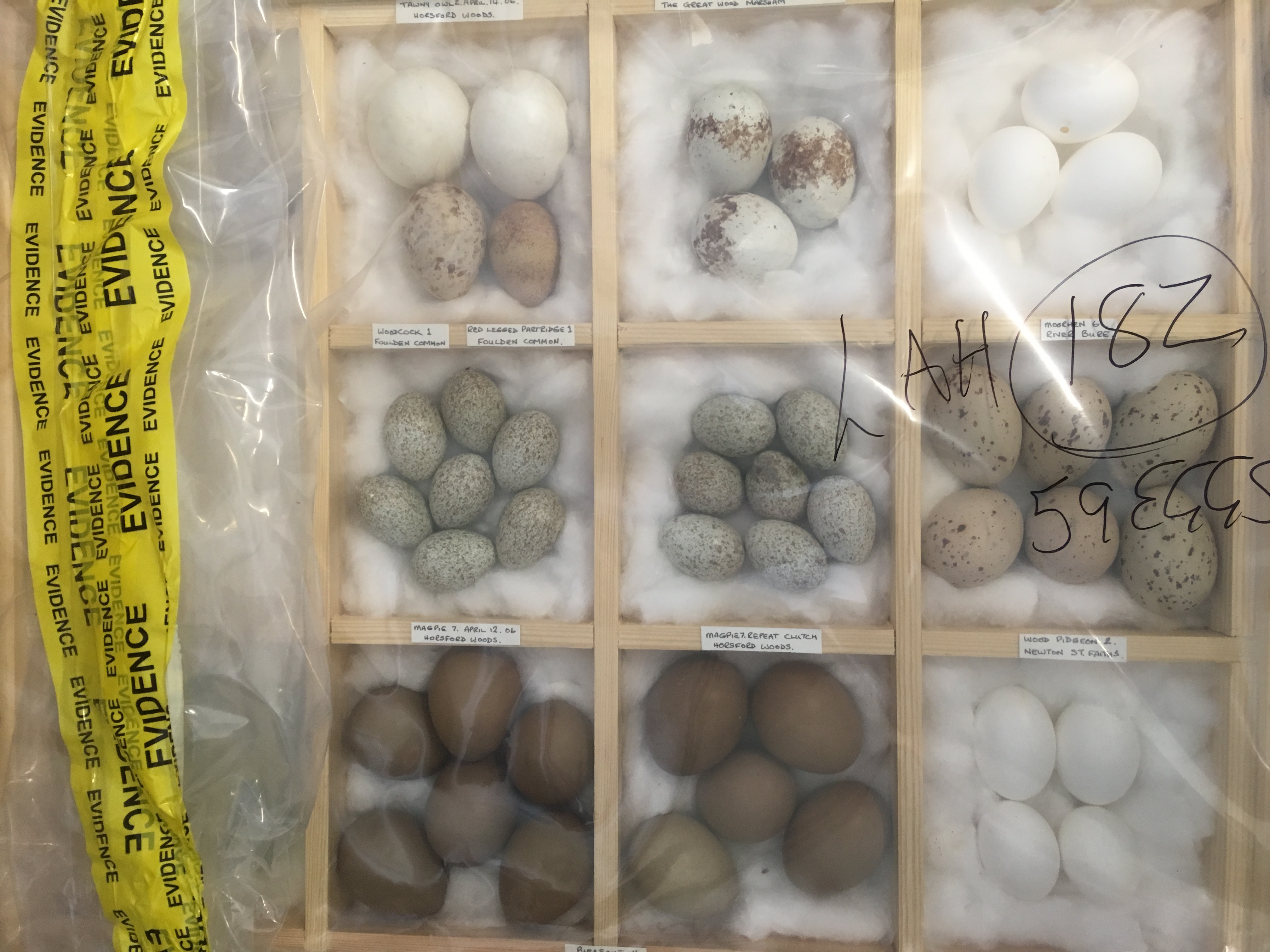
Some of the eggs taken included vulnerable and rare species, including European Turtle Dove and Western Marsh Harrrier (RSPB).
PC Tom Pellew and PC Leah Hutchins, both based at Aylsham Police Station, led the investigation, with the former stating: "The sheer scale of the collection of eggs that Lingham had in his possession was very worrying, with many of the species involved being endangered. We know that crimes of this nature often go under-reported, which is why cases and convictions like this are so important in raising awareness of such wildlife offences.
"The vigilance and assistance of the public is key in preserving Norfolk's natural beauty and wildlife diversity, which is why I would urge anyone who has witnessed offences like this to contact police on 101."
The five charges Lingham pleaded guilty to were:
- Taking nine Common Linnet eggs at Cawston Heath;
- Possession of articles capable of being used to commit an offence during stop and search;
- Possession of 75 Schedule One listed wild bird eggs;
- Possession of 4,070 ordinarily protected wild bird eggs;
- Possession of articles capable of being used to commit an offence at his home address.
Saturday 6 October 2018
Subscribe to:
Posts (Atom)

































